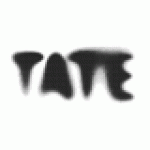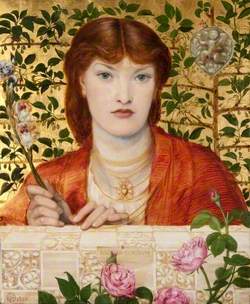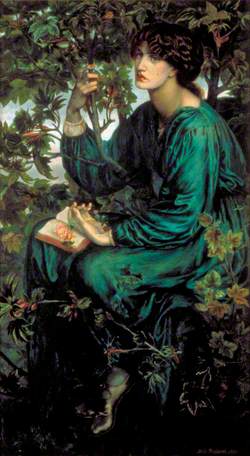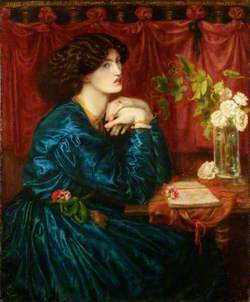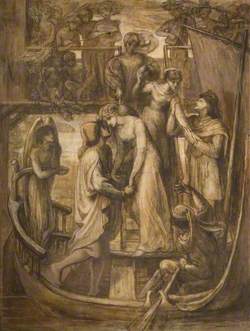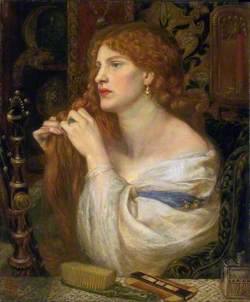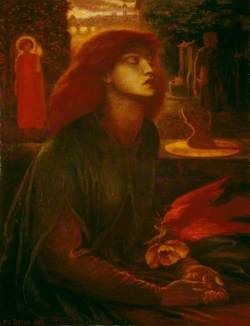How you can use this image
This image is available to be shared and re-used under the terms of the Creative Commons Attribution-NonCommercial-NoDerivatives licence (CC BY-NC-ND).
You can reproduce this image for non-commercial purposes and you are not able to change or modify it in any way.
Wherever you reproduce the image you must attribute the original creators (acknowledge the original artist(s) and the person/organisation that took the photograph of the work) and any other rights holders.
Review our guidance pages which explain how you can reuse images, how to credit an image and how to find more images in the public domain or with a Creative Commons licence available.
DownloadNotes
Add or edit a note on this artwork that only you can see. You can find notes again by going to the ‘Notes’ section of your account.
Rossetti explained the subject of Proserpine in a letter to W. A. Turner, who bought a version of the picture in 1877: 'The figure represents Proserpine as Empress of Hades. After she was conveyed by Pluto to his realm, and became his bride, her mother Ceres importuned Jupiter for her return to earth, and he was prevailed on to consent to this, provided only she had not partaken of any of the fruits of Hades. It was found, however, that she had eaten one grain of a pomegranate, and this enchained her to her new empire and destiny. She is represented in a gloomy corridor of her palace, with the fatal fruit in her hand. As she passes, a gleam strikes on the wall behind her form some inlet suddenly opened, and admitting for a moment the light of the upper world; and she glances furtively towards it, immersed in thought'. (W. Sharp, 'Dante Gabriel Rossetti: A Record and Study', London 1882, p.236)
The decorative quality of the picture is accentuated by the curve of the ivy spray, a symbol of clinging memory, which is echoed in Proserpine's arm and the rich folds of drapery. The painting is inscribed with the artist's signature and date on a scroll at lower left: 'DANTE GABRIELE ROSSETTI RITRASSE NEL CAPODANNO DEL 1874' ('Dante Gabriel Rossetti painted this at the beginning of 1874'). Rossetti, who was also a poet, wrote a sonnet for the painting, inscribing it in Italian on the picture and in English on the frame: 'Afar away the light that brings cold cheer Unto this wall, – one instant and no more Admitted at my distant palace-door. Afar the flowers of Enna from this drear Dire fruit, which, tasted once, must thrall me here. Afar those skies from this Tartarean grey That chills me: and afar, how far away, The nights that shall be from the days that were. Afar from mine own self I seem, and wing Strange ways in thought, and listen for a sign: And still some heart unto some soul doth pine, (Whose sounds mine inner sense in fain to bring, Continually together murmuring,) – "Woe's me for thee, unhappy Proserpine!" The frame, designed by Rossetti, is decorated with roundels which resemble a section through a pomegranate.
Further reading: Virginia Surtees, 'Dante Gabriel Rossetti 1828–1882. The Paintings and Drawings: A Catalogue Raisonné' – 23, Oxford 1971, I, pp.131–134 Leslie Parris (ed.), 'The Pre-Raphaelites', exhibition catalogue, Tate Gallery, London 1984, reprinted 1994, pp.231–232 Terry Riggs February 1998
Title
Proserpine
Date
1874
Medium
Oil on canvas
Measurements
H 125.1 x W 61 cm
Accession number
N05064
Acquisition method
Presented by W. Graham Robertson 1940
Work type
Painting
Inscription description
date inscribed
Tate Britain
Millbank, London, Greater London SW1P 4RG England
Stories
-
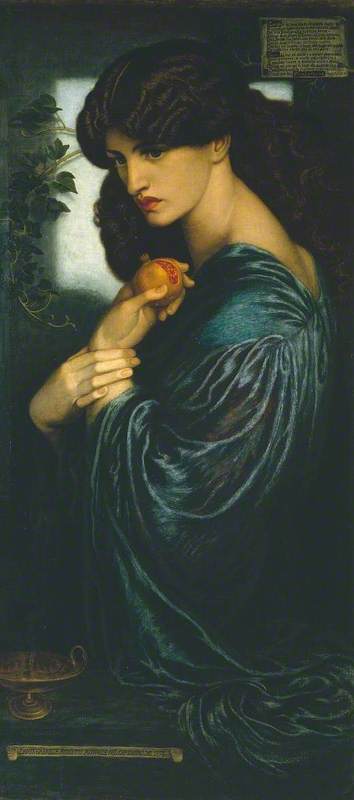 What art means to me: Rumaanah Seedat
What art means to me: Rumaanah SeedatRumaanah Seedat
-
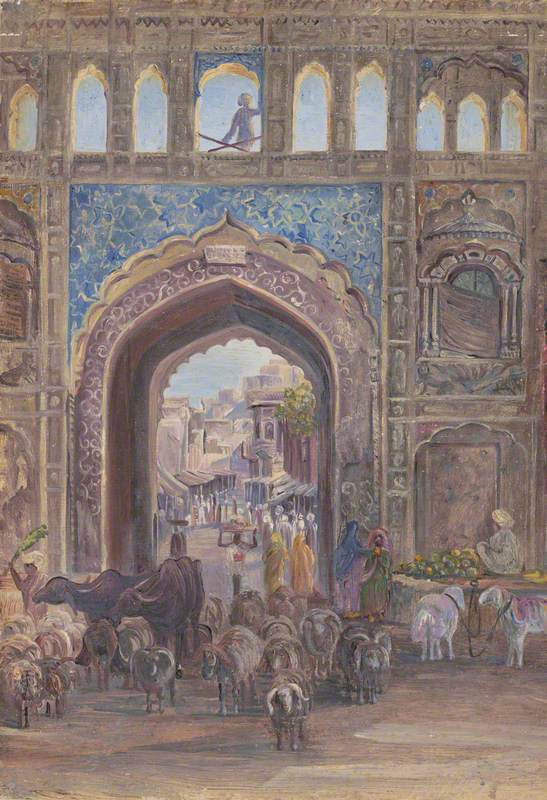 Colour in art: a brief history of blue pigment
Colour in art: a brief history of blue pigmentLydia Figes
-
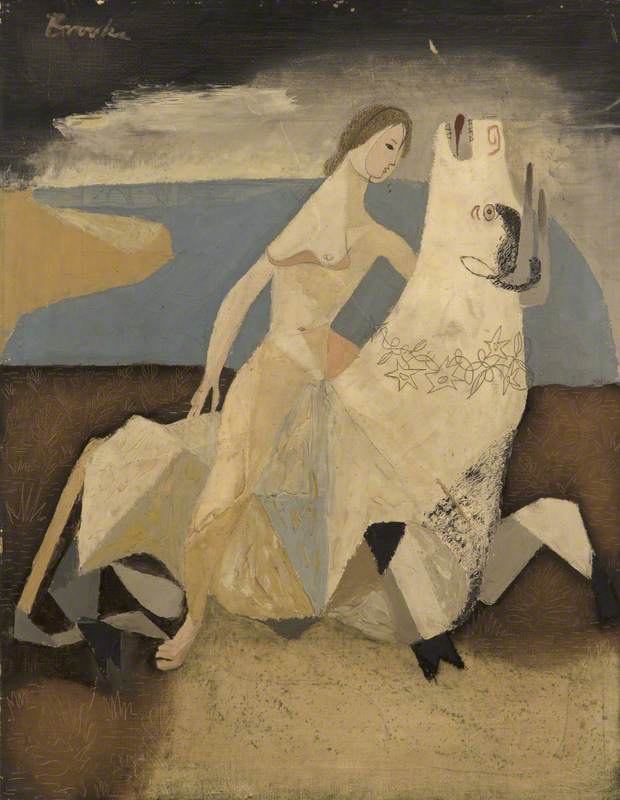 Greek gods in art: a tale of entitlement and consent
Greek gods in art: a tale of entitlement and consentPatricia Yaker Ekall
-
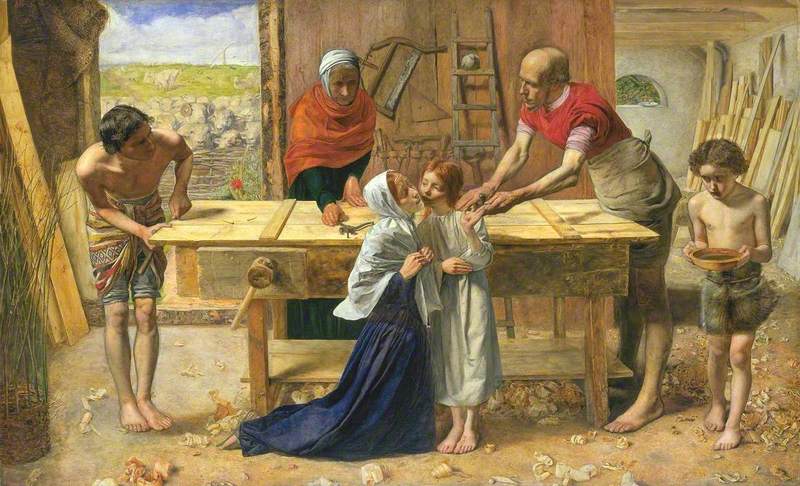 Who were the Pre-Raphaelite Brotherhood?
Who were the Pre-Raphaelite Brotherhood?Andrew Shore

